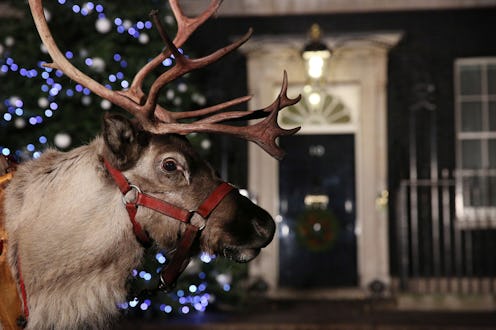Life
There Is Real Science Behind Rudolph's Red Nose
We hear a lot of fantastical stories at Christmas time, from the one about an old bearded guy who delivers gifts via chimney to the one about the snowman who comes to life and runs afoul of the cops, but the tale of a flying reindeer who averts a global Christmas catastrophe with his light-up nose may just be the most ludicrous. And yet, if new research into the science behind Rudolph’s nose is correct, this unbelievable story may hold a grain of truth. It turns out that a glowing red nose is exactly what you need on a foggy Christmas Eve. Who knew?
Nathaniel Dominy, a professor of anthropology and evolutionary biology at Dartmouth College, published a paper this week in Frontiers for Young Minds , a “scientific journal written by scientists and reviewed by a board of kids,” that considers the biological and evolutionary implications of reindeer having luminescent noses. As Dominy points out, due to the rarity of known reindeer with glowing noses, the scientific community has so far neglected in-depth investigations of this phenomenon. Rudolph is thus far the only documented case; the story of this unusual specimen first entered the public sphere through a 1939 book by Robert L. May. There followed a popular song in 1949, and a stop-motion animated film in 1964.
Recent research has revealed that Arctic reindeer see ultraviolet (UV) light, an ability that’s rare among mammals that are awake during the day and nonexistent among mammals. Although scientists haven’t yet pinpointed the exact benefits of reindeer being able to see UV light, Dominy theorizes that it may help them to identify predators and food sources in the snow, especially in mid-winter, when “the scattering of light high in the atmosphere produces light that is mainly UV and purplish.”
Another unusual facet of reindeer vision is that the reflective tissue in their eyes actually changes color according to the season. In the summer, reindeer have golden eyes, but they turn blue in winter, potentially in order to improve their ability to see blue light in dim winter conditions.
But although reindeer seem to have adapted to have strong vision in the winter months, their ability to see blue light stops being useful when there’s fog. Certain colors are more able to shine through fog than others,and Dominy explains that “fog blocks blue light.” Thus, eight reindeer trying to fly through a foggy night would be flying blind. However, red light — just like the light emitted from Rudolph’s nose — travels farthest through fog. In short, Rudolph is a great fog light. (Sadly, no word yet on the physics of reindeer flight.)
Dominy warns that there are certain drawbacks that might come with a red luminescent nose. Reindeer noses contain an intricate system of blood vessels to that keep them toasty, which has the advantage of preventing their noses from freezing, but the disadvantage of being a significant source of heat loss. A reindeer with a luminescent nose working throughout the night would risk losing too much body heat and becoming hypothermic. Dominy advises, “It is therefore extremely important for children to provide high-calorie foods to help Rudolph maintain his body temperature on Christmas Eve.”
Read the full article (which is adorable and hilarious) at Frontiers for Young Minds .
